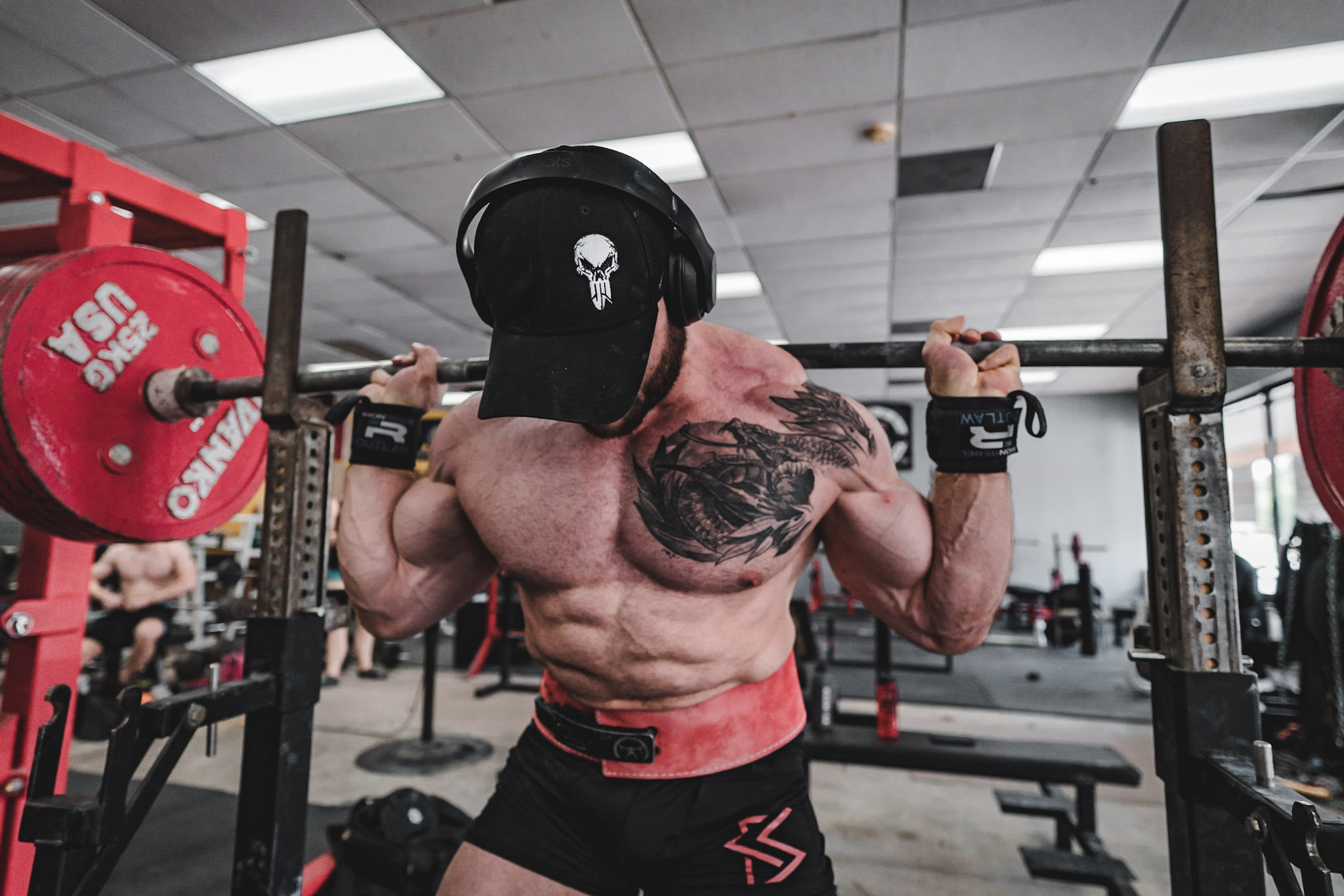
This mini-series explains how I completely overhauled my squat technique over the course of a decade. In the process, I went from a truly cringe-worthy 500-pound squatter to a world-record-holding 800-pound squatter. I’m breaking that down into a few parts as an example of how important making small changes can be in both programming and execution.
In part one of this series, I addressed one of the biggest things holding my 20-year-old squatting ability back: my elbow positioning. Here I’m going to analyze both my head position and ability to brace properly, two more crucial edge pieces in my squatting puzzle.
Head Position & Packing the Neck
I’ll begin with head positioning, because for me, it’s hard to brace when I don’t begin with the head. First, a disclaimer, because I know Clint Darden is gonna read this: when most people refer to head position in the squat, they’re usually looking to describe what your neck should be doing. To execute a proper squat, your neck must be “packed.”
Elitefts has plenty of resources on how to pack your neck, but I like to use a pretty simple imagery: imagine you’re trying to use your chin to hold a lacrosse ball against your throat. You sort of half- or quarter-shrug and push your neck into your traps. That is the position you should hold during squats.
It’s important to note that you can look in different directions regardless of the position of the neck and head. Again: the neck should be packed. The gaze should be directed in whichever manner allows the athlete to maintain the most balance and control over the bar. For most people, that means straight ahead or very slightly upward. This should make sense if you think about other sports – you almost always want to look where you want the ball, puck, or other inanimate object to go.
However, that won’t always be the case. For me, when I look straight ahead or slightly upward, it becomes very difficult for me to maintain the constant torso angle we discussed in part one of this series. Instead, I end up arching my back too aggressively and performing that back-breaking squat-morning seen in the older video.
Breathing & Bracing
The phrase “arching my back” immediately leads me to think of bracing, as in some ways, a strong brace is the opposite of a strong arch – just like a skullcrusher is in some ways the opposite of a curl. When you brace, instead of arching your spine, you’re pulling it into a neutral position.
I’ve discussed the mechanic of bracing at length, so again, I won’t repeat myself, but I do recommend you check out these resources if you haven’t already:
And this video:
Bracing in the squat allows for the most efficient transfer of energy from your legs to the bar. However, it requires that your entire spine – lumbar, thoracic and cervical – remain in a neutral position throughout the movement. (Note that “neutral position” does allow for the spine’s natural curvature. It’s not going to be perfectly flat.). Until I started looking down, I simply could not find a good brace, because I kept pulling myself into an over-extended position.
I hate blanket statements, but I feel pretty safe in making this one: everyone must brace to squat properly. That, in fact, may well be a pre-requisite to even performing the movement safely, let alone heavily.
So, here’s your takeaway from this second installment in our series:
- Learn to brace properly and to hold that braced position throughout your entire squat.
- If you are struggling to brace, try looking slightly downward rather than straight ahead or slightly up and see if that helps at all.
Simple, right? Well, yes – but simple does not equal easy. Do not underestimate the importance or difficulty of proper bracing; it may well change your powerlifting game up completely!








